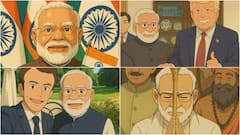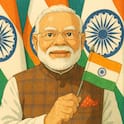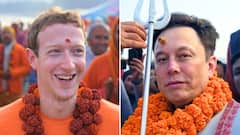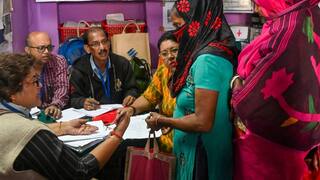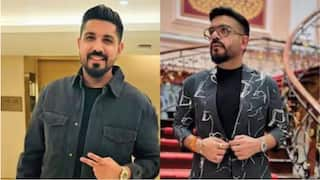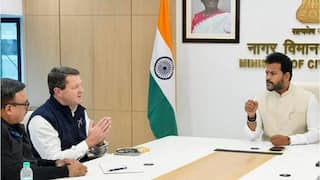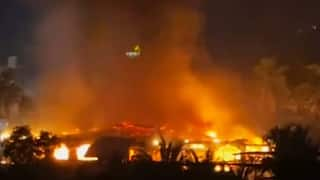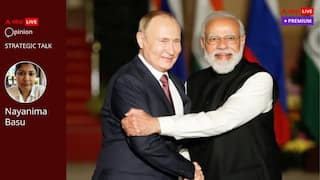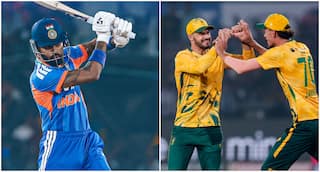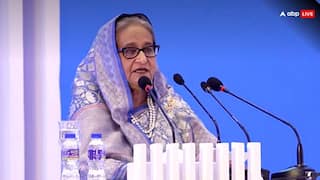How These Children Are Learning An ‘Empowering’ Art Of Storytelling, Photography, With A Loaned Camera Phone
Armed with iPhone 12s, 30 children from two Gurugram schools recently participated in a special workshop where they learnt the ropes of photography from renowned photographer Aditya Arya.
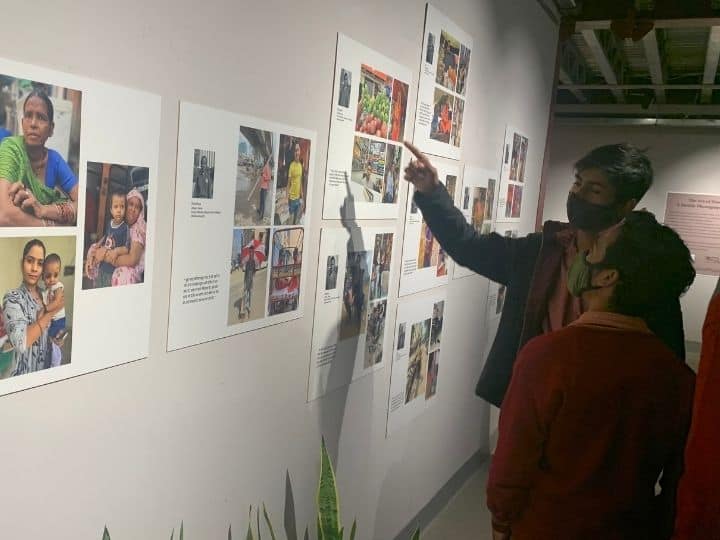
Gurugram: Simran wants to join the Indian Army after she completes studies, Shivani wants to become a teacher. Krishana and Abhay haven’t decided yet, but they “definitely want to do something in life”. They all are, however, sure that there is one profession they will definitely consider or fall back on if they get a chance. And that is photography.
These school children were part of two groups of students from Shiksha Education Centre in Jharsa near Gurugram and Saksham Bal Vikas Sanstha who participated in a special workshop, ‘The Art of Storytelling’, where they learnt mobile photography from renowned photographer Aditya Arya.
The workshops organised by Gurugram's Museo Camera, a museum founded by Arya and dedicated to the history and art of photography, were specially curated in collaboration with Shiksha and Saksham, charitable organisations committed to providing academic and vocational education to underprivileged children.
Each workshop had 15 students and the children attended 12 classes — every Saturday — over around three months.
The best images clicked by 30 children from the first two groups are now displayed, along with a collage of their own photos, at an exhibition at the one-of-its-kind camera museum that celebrates the evolution of photography — right from the 19th century pinhole cameras.
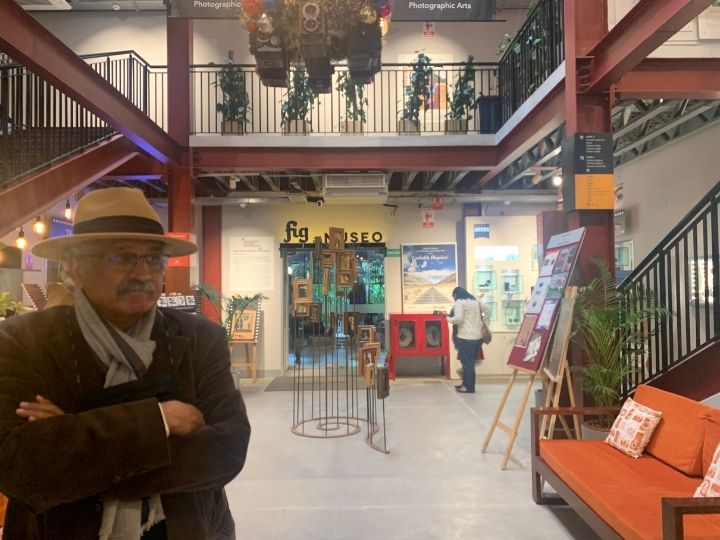
‘Empowering’ Art Of Storytelling
As a pandemic-hit India started to unlock last year, these children found themselves looking at the country with new eyes, through the lenses of a phone camera.
The children, each armed with an iPhone 12, would set out on the streets of Chakkarpur, Banjara Basti and other areas around Gurugram to shoot what caught their eyes, with a team of supervisors from their school and Museo Camera accompanying them.
“The kids come in the morning for a briefing, then go out shooting and once they are back there is a critiquing session,” Arya explained.
These children had used a smartphone before, thanks to the pandemic that shifted studies online, but using the phone’s camera was limited to submission of “homework and class projects”.
Asked what they learnt at the workshop, and the first thing the children said was “focus”.
“We would find clicking portraits tricky, but now we know how to focus on a subject,” said Aurangzeb, a student from Shiksha school.
Abhay doesn’t “chop off the heads” while clicking a photo any more and his hands are now steadier when holding the camera phone.
So how did they choose the ‘subjects’ for their photos?
“I found her posture, the tattoos and the enthusiasm in her eyes endearing,” Krishana said, pointing to a ‘Banjara’ woman’s photo he had shot. He also clicked a cobbler in a local market, and said it was his smiling face while polishing someone’s shoes that moved him.
For Simran, it was an “empowering” experience as she got to speak to many strangers and know a bit about their lives.
“When I have a camera in my hand, I know no fear,” Aditya Arya quoted famous photographer Alfred Eisenstaedt to sum up what the initiative has achieved, as he said how the experience brought down the barriers for these rural children.
“Their parents are daily wagers. This gave them an insight into understanding their own communities. A camera in their hands gives them confidence…they could (now) walk up to anyone with a phone and say ‘Bhaisahab main aap se baat karna chahta hoon (Sir, I want to talk to you)’,” Arya said, calling it a mission accomplished.
He also said the selection procedure takes a few weeks because they first need to assess the interest of the children to be enrolled for the workshop.
All the iPhone 12s used by the children have been given to Museo Camera by Apple for the programme.
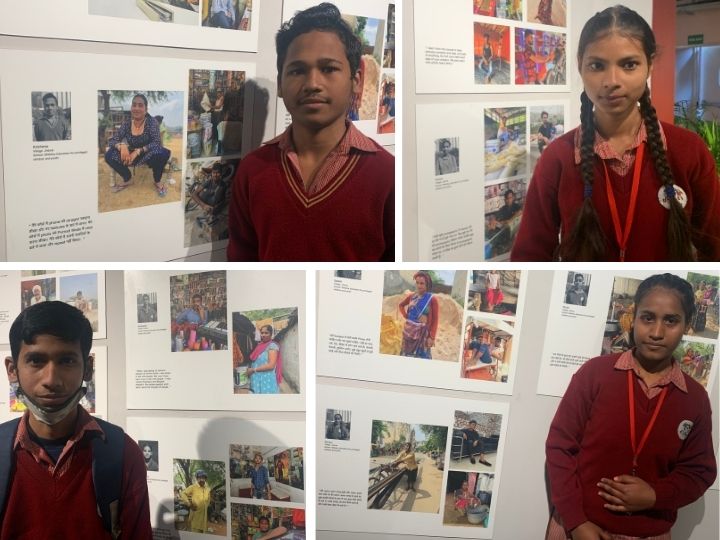
‘It Was Surreal’
A small event was organised at the museum Saturday to celebrate the success of the budding photographers.
Udai Malhotra, trustee of the Shiksha Education Centre who would accompany the children on their every photography trip, said the initiative came at the right time because the children had a lot of pent-up energy after the lockdown and they could creatively channel it out.
“Imagine these children having an iPhone 12…, using it, being with professional photographers, listening to them in the studios. It was really surreal…” said Manisha from Saksham. She said it all seemed unbelievable initially, and there were questions as to what would be achieved through this. But, she added, “We don’t really need to teach to learn. We need to teach the children to learn by themselves.”
Museo Camera, a not-for-profit museum, has over 18,000 square feet of space dedicated to display Arya’s collection of over 2,500 cameras and other photographic equipment dating back to the 1850s.
Asked how he feels about phones replacing proper cameras, Arya said it’s a truth he has accepted. Professionals may still need proper cameras, but for others a good phone camera is all that they need, he said.
“They don’t have to learn the grammar of photography…the aperture, shutters and other technicalities,” Arya said as he showed some of his frames from Ladakh, also part of the exhibition, and explained how effortlessly he captured the picturesque moonscapes with an iPhone 13 Pro Max.
“After carrying dozens of lenses and heavy equipment during my travels, I feel liberated thanks to the new avatar of technology…”















